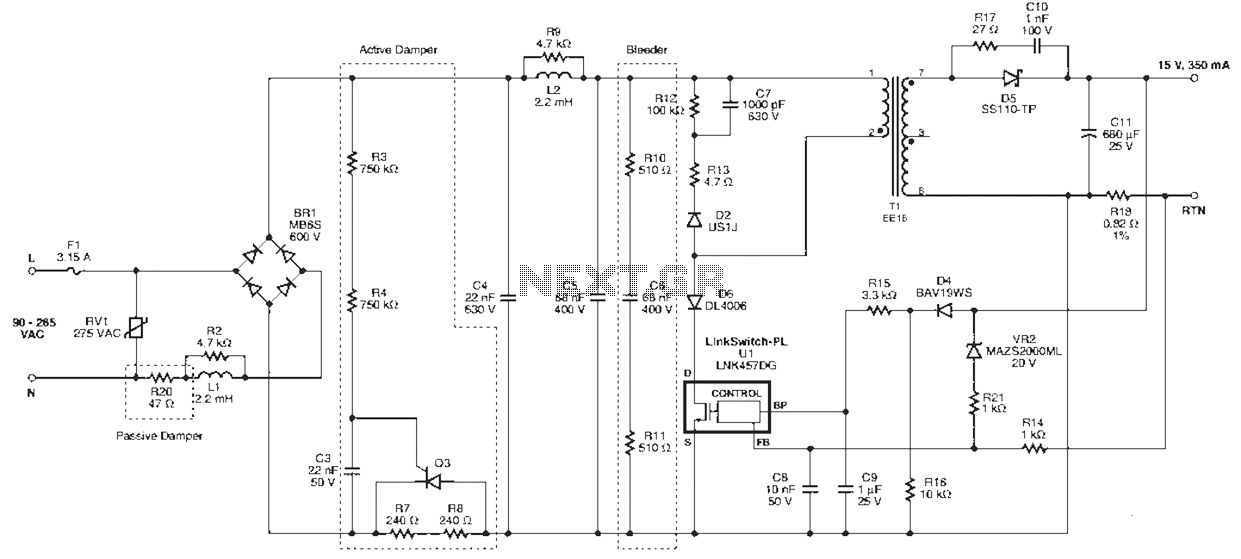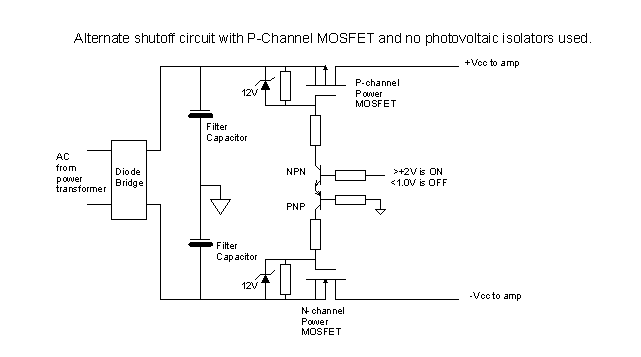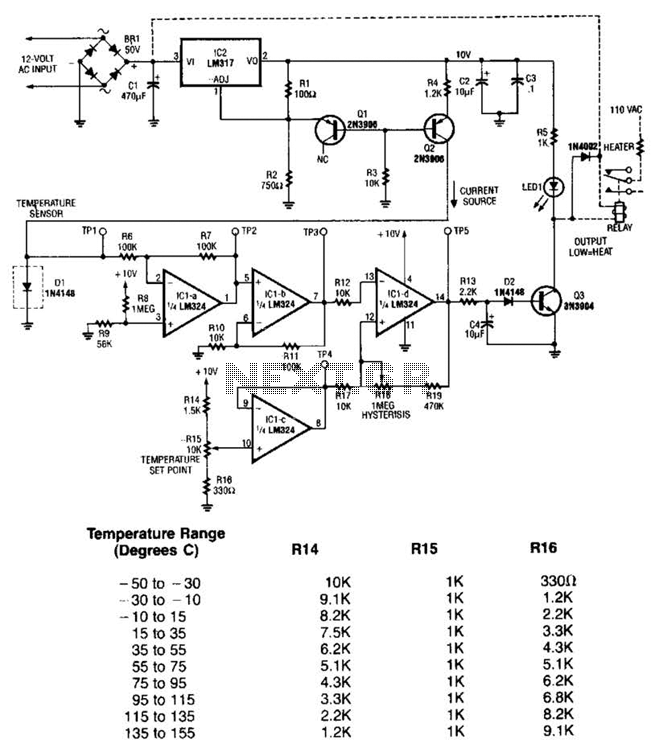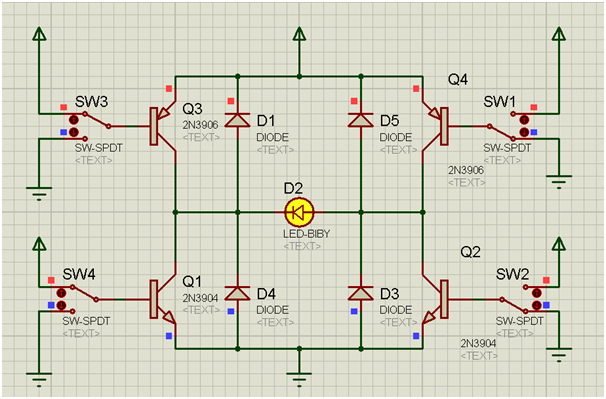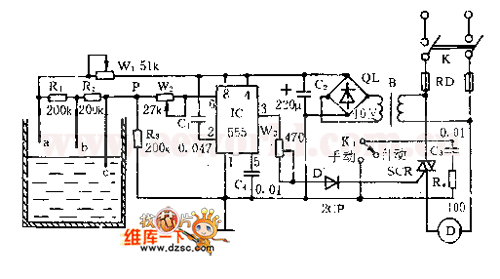
Microchip PIC Programmer ICSP Circuit Guide
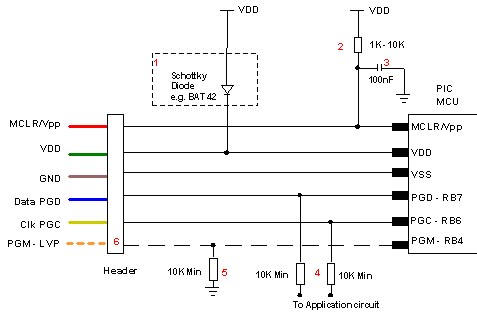
Microchip does not recommend any specific circuit for In-Circuit Serial Programming (ICSP). Various diagrams exist for different tools, such as Pro Mate and PICKit2, which feature similar circuitry with minor variations. Some schematics may suggest resistor values that are lower than optimal, potentially causing issues with programmers, including those from Microchip. Kanda has developed a recommended In-System Programming circuit designed to work effectively with their range of PIC programmers and other PIC programmers. This circuit is illustrated in the accompanying diagram. It is important to review the notes that describe the circuit and clarify the effects of additional components, such as capacitors. Kanda programmers can supply either 3.3V or 5V to the target circuit, while some other ICSP programmers consistently provide 5V. If the circuit operates at a lower voltage than the programmer, a diode should be installed on the VDD line to protect the rest of the circuit. In certain cases, a series resistor may be a suitable alternative to the diode. The MCLR/VPP pin requires a resistor connected to VDD, with a minimum value of 1K being acceptable, although 10K is preferable. For PIC16F devices that only connect to VDD during the first ICSP entry (such as PIC16F8x/87x/7x/7x7), a minimum 4.7K resistor should be used to minimize the risk of code execution before VPP rises. Supervisory circuits or push buttons connected to MCLR should be isolated from the VPP voltage by placing them on the VDD side of the resistor or by adding a Schottky diode on this line, as indicated in note 1. The 100nF capacitor shown on the MCLR/VPP pin is optional for High Voltage Programming (HVP), but it is advisable to install a capacitor to prevent glitches on MCLR. The maximum recommended value is 100nF, although a smaller value is preferred, as larger capacitors may hinder the PIC from entering HVP mode. This capacitor should not be used for Low Voltage Programming (LVP) mode. Ideally, the Clock and Data lines should be dedicated to ICSP; however, if this is not feasible, the application circuit should be isolated from the data and clock lines with series resistors of greater than 10K. This is particularly critical if either line is forced into input or output mode. In rare instances, series resistors may not suffice, necessitating the use of a 4053 multiplexer or a similar circuit. Capacitors on these programming lines should be avoided whenever possible. If required for noise immunity, the maximum capacitance that all programmers can accommodate is 1nF, although some may perform better. Kanda Handheld PIC Programmers will supply either 3.3V or 5V VDD to target PIC microcontroller circuits. The target circuit can be powered or unpowered, with user selection available for most PIC microcontrollers, while it is fixed to 3.3V for J-type PIC microcontrollers and LF parts that may be damaged by 5V. The high voltage programming voltage (VPP) is typically set to 12V for most PIC devices but is automatically adjusted to 9V for PIC18F K-type and the latest PIC16F microcontrollers.
The circuit for In-System Programming (ISP) is designed to ensure compatibility and functionality across various PIC microcontroller models. The circuit's architecture should include a robust power management system to accommodate the varying voltage requirements of different PIC devices. The use of a diode on the VDD line serves not only as a protective measure but also as a voltage clamp, preventing backflow of current that could potentially damage sensitive components.
The inclusion of resistors on the MCLR/VPP pin is critical for ensuring stable operation during programming sessions. The selection of resistor values directly influences the timing and responsiveness of the programming process. It is essential to adhere to the recommendations provided for resistor values to mitigate the risk of premature code execution.
Furthermore, the careful consideration of capacitor values on the MCLR and programming lines is paramount. While capacitors can help filter noise, their values must be selected judiciously to avoid interference with the programming sequence. The recommended maximum capacitance of 1nF for the programming lines ensures that the circuit remains responsive and does not inadvertently disrupt the programming signals.
For applications where the Clock and Data lines cannot be dedicated to ICSP, implementing series resistors is a prudent method to isolate these lines from potential interference. The use of a multiplexer, such as the 4053, may be warranted in more complex setups where additional isolation is necessary to maintain signal integrity.
In conclusion, the design of the ICSP circuit must take into account the specific requirements of the target PIC microcontroller, including voltage levels, signal integrity, and component selection. By following the outlined recommendations, a reliable and effective programming interface can be achieved, ensuring successful communication between the programmer and the target device.Microchip do not recommend any particular circuit for ICSP programming. There are diagrams for different tools, such as Pro Mate and PICKit2 with similar circuitry but slight variations. In some schematics, their suggested resistor values are too small, in our opinion, and can cause problems with programmers, even Microchip ones.
Kanda have developed a recommended In System Programming circuit that will work effectively with our PIC programmer range, and other PIC programmers. This circuit is shown in the diagram below. Please read the notes that describe the circuit and explain the effect of extra components such as capacitors.
Kanda programmers are designed to provide 3. 3V or 5V to the target circuit, but some other ICSP programmers always supply 5V. If your circuit operates at a lower voltage than the programmer, then the diode shown on VDD should be fitted to protect the rest of the circuit. A series resistor may be acceptable instead of the diode in some cases. MCLR/VPP pin needs a resistor to VDD. A minimum of 1K should work but 10K is better. PIC16F devices with only VDD first ICSP entry (PIC16F8x/87x/7x/7x7) should be fitted with a 4K7 resistor as a minimum to reduce the possibility of code running before VPP rises.
Supervisory circuits or push buttons on MCLR should be isolated from the VPP voltage, by placing them on the VDD side of the resistor or by fitting a Schottky diode on this line as per note 1. The 100nF capacitor shown on MCLR/VPP pin is optional for HVP but we do recommend that a capacitor is fitted to avoid glitches on MCLR.
100nF is the maximum value, and we recommend something smaller. Larger capacitors may prevent the PIC from entering HVP mode. Do not fit for LVP mode. If possible, Clock and Data lines should be dedicated to ICSP but where this is not possible, the application circuit should be isolated from the data and clock lines with series resistors, above 10K. This is especially important if either of these lines forces the pin as an input or output. In exceptional cases, series resistors may not be sufficient and a 4053 multiplexer or similar circuit should be used.
Capacitors on these programming lines should be avoided if at all possible. If they are needed, for noise immunity for example, then the maximum capacitance that all programmers can handle is 1nF, although some are better. Kanda Handheld PIC Programmers will provide 3. 3V or 5V VDD to target PIC microcontroller circuits. The target circuit can be powered or unpowered. This can be user selected for most PIC microcontrollers but it is fixed to 3. 3V for J type PIC microcontrollers and LF parts that can be damaged by 5V. The high Voltage programming voltage (VPP) is set to 12V for most PIC devices but is automatically set to 9V for PIC18F K type and newest PIC16F PIC microcontrollers.
🔗 External reference
The circuit for In-System Programming (ISP) is designed to ensure compatibility and functionality across various PIC microcontroller models. The circuit's architecture should include a robust power management system to accommodate the varying voltage requirements of different PIC devices. The use of a diode on the VDD line serves not only as a protective measure but also as a voltage clamp, preventing backflow of current that could potentially damage sensitive components.
The inclusion of resistors on the MCLR/VPP pin is critical for ensuring stable operation during programming sessions. The selection of resistor values directly influences the timing and responsiveness of the programming process. It is essential to adhere to the recommendations provided for resistor values to mitigate the risk of premature code execution.
Furthermore, the careful consideration of capacitor values on the MCLR and programming lines is paramount. While capacitors can help filter noise, their values must be selected judiciously to avoid interference with the programming sequence. The recommended maximum capacitance of 1nF for the programming lines ensures that the circuit remains responsive and does not inadvertently disrupt the programming signals.
For applications where the Clock and Data lines cannot be dedicated to ICSP, implementing series resistors is a prudent method to isolate these lines from potential interference. The use of a multiplexer, such as the 4053, may be warranted in more complex setups where additional isolation is necessary to maintain signal integrity.
In conclusion, the design of the ICSP circuit must take into account the specific requirements of the target PIC microcontroller, including voltage levels, signal integrity, and component selection. By following the outlined recommendations, a reliable and effective programming interface can be achieved, ensuring successful communication between the programmer and the target device.Microchip do not recommend any particular circuit for ICSP programming. There are diagrams for different tools, such as Pro Mate and PICKit2 with similar circuitry but slight variations. In some schematics, their suggested resistor values are too small, in our opinion, and can cause problems with programmers, even Microchip ones.
Kanda have developed a recommended In System Programming circuit that will work effectively with our PIC programmer range, and other PIC programmers. This circuit is shown in the diagram below. Please read the notes that describe the circuit and explain the effect of extra components such as capacitors.
Kanda programmers are designed to provide 3. 3V or 5V to the target circuit, but some other ICSP programmers always supply 5V. If your circuit operates at a lower voltage than the programmer, then the diode shown on VDD should be fitted to protect the rest of the circuit. A series resistor may be acceptable instead of the diode in some cases. MCLR/VPP pin needs a resistor to VDD. A minimum of 1K should work but 10K is better. PIC16F devices with only VDD first ICSP entry (PIC16F8x/87x/7x/7x7) should be fitted with a 4K7 resistor as a minimum to reduce the possibility of code running before VPP rises.
Supervisory circuits or push buttons on MCLR should be isolated from the VPP voltage, by placing them on the VDD side of the resistor or by fitting a Schottky diode on this line as per note 1. The 100nF capacitor shown on MCLR/VPP pin is optional for HVP but we do recommend that a capacitor is fitted to avoid glitches on MCLR.
100nF is the maximum value, and we recommend something smaller. Larger capacitors may prevent the PIC from entering HVP mode. Do not fit for LVP mode. If possible, Clock and Data lines should be dedicated to ICSP but where this is not possible, the application circuit should be isolated from the data and clock lines with series resistors, above 10K. This is especially important if either of these lines forces the pin as an input or output. In exceptional cases, series resistors may not be sufficient and a 4053 multiplexer or similar circuit should be used.
Capacitors on these programming lines should be avoided if at all possible. If they are needed, for noise immunity for example, then the maximum capacitance that all programmers can handle is 1nF, although some are better. Kanda Handheld PIC Programmers will provide 3. 3V or 5V VDD to target PIC microcontroller circuits. The target circuit can be powered or unpowered. This can be user selected for most PIC microcontrollers but it is fixed to 3. 3V for J type PIC microcontrollers and LF parts that can be damaged by 5V. The high Voltage programming voltage (VPP) is set to 12V for most PIC devices but is automatically set to 9V for PIC18F K type and newest PIC16F PIC microcontrollers.
🔗 External reference
